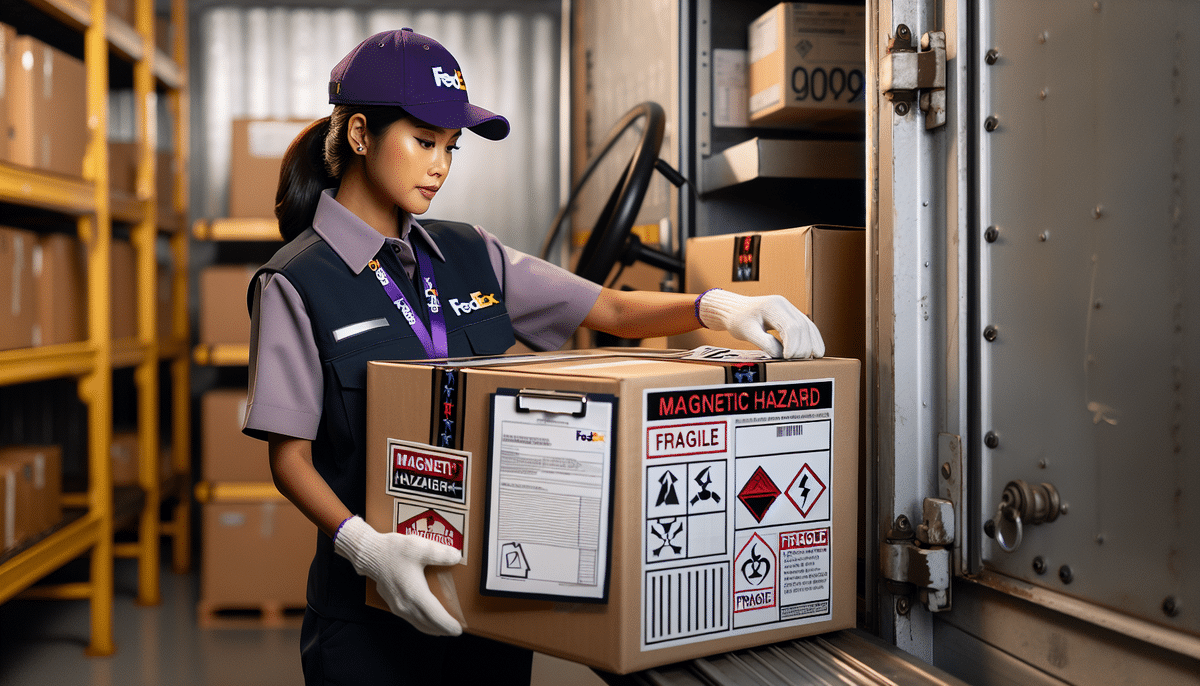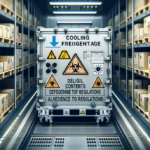Ensuring Safe Shipping of Magnetic Materials: Comprehensive Guidelines and Best Practices
Magnetic materials are ubiquitous in our daily lives, found in everything from credit cards and headphones to advanced medical devices. However, transporting these items safely presents unique challenges that require meticulous attention to packaging, labeling, and regulatory compliance. This article delves into the best practices and guidelines for shipping magnetic materials, with a focus on FedEx's protocols, to ensure secure and risk-free delivery.
Understanding Magnetic Materials and Their Shipping Risks
Magnetic materials possess the ability to generate magnetic fields, which can interfere with other materials and electronic devices. Shipping these substances without appropriate precautions can result in demagnetization, damage to electronic components, or personal injury if the magnets become dislodged.
- Common Magnetic Materials: Includes neodymium magnets, ceramic magnets, magnetic media, and devices utilizing magnets for functionality.
- Potential Risks:
- Demagnetization: Exposure to fluctuating temperatures or other magnetic fields can weaken a magnet's strength.
- Electronic Interference: Strong magnets, such as neodymium types, can disrupt nearby electronic devices.
- Physical Hazards: Loose magnets can pose choking hazards or cause injury if mishandled.
According to the Federal Aviation Administration (FAA), improper shipping of magnetic materials can interfere with navigation and communication systems during transit, underscoring the importance of adhering to safety protocols.
Proper Packaging Techniques for Magnetic Items
Effective packaging is paramount to safeguarding magnetic materials during shipping. FedEx recommends the following strategies to minimize risks:
- Use Sturdy Outer Boxes: Opt for corrugated cardboard boxes with a minimum of 200-pound burst strength to withstand handling and transit pressures.
- Internal Padding: Incorporate materials like foam, bubble wrap, or anti-static bags to secure the magnets and prevent movement within the package.
- Non-Magnetic Packaging Materials: Ensure that all packaging components are non-magnetic to avoid interference with the shipped items.
- Secure Fastening: Utilize strong tape and secure closures to prevent the package from opening during transportation.
Labeling Requirements for Magnetic Material Shipments
Proper labeling is essential to inform handlers of the magnetic contents and ensure appropriate care:
- Clear Identification: Labels should clearly state "Magnetic Materials" to alert handlers of potential risks.
- Hazard Labels: Depending on the magnetic material's classification, additional hazard labels may be required as per PHMSA regulations.
- Visibility: Labels must be prominently placed and easily readable on all sides of the package.
Selecting the Appropriate Shipping Box for Magnetic Items
Choosing the right shipping box is crucial for the protection of magnetic materials:
- Size Considerations: The box should offer a snug fit, minimizing excess space that could allow movement and potential damage.
- Wall Thickness: Double-wall or triple-wall boxes provide enhanced durability for heavier or more fragile magnetic items.
- Compression Strength: Ensure the box meets the necessary compression strength to protect against stacking and pressure during transit.
For more detailed packaging guidelines, refer to FedEx’s Packing & Packaging Guide.
Federal Regulations for Shipping Magnetic Materials
Shipping magnetic materials must comply with regulations set forth by the U.S. Department of Transportation (DOT) and other governing bodies:
- DOT Regulations: Governs the transportation of hazardous materials, including those with magnetic properties. Compliance ensures safety and avoids legal repercussions.
- International Guidelines: When shipping internationally, adhere to guidelines such as the International Air Transport Association (IATA) regulations.
- FedEx Compliance: FedEx provides comprehensive training and certification for handling hazardous materials, ensuring all shipments meet regulatory standards.
Consult the PHMSA Hazardous Materials Regulations for detailed compliance information.
Best Practices for Labeling Packages Containing Magnetic Materials
Effective labeling ensures the safe handling and transportation of magnetic materials:
- Hazard Class Identification: Each package must display the appropriate hazard class number and identification number as per DOT regulations.
- Handling Instructions: Include clear instructions such as "Handle with Care" or "Keep Away from Electronics" to inform handlers of specific precautions.
- Consistent Placement: Labels should be placed on multiple sides of the package to ensure visibility regardless of how the package is positioned.
For detailed labeling requirements, refer to the DOT Technical Safety Standards.
Top Tips for Secure Transportation of Magnetic Items
Beyond basic packaging and labeling, several additional measures can enhance the safety of shipping magnetic materials:
- Choose Reliable Carriers: Select carriers like FedEx that specialize in handling hazardous and sensitive materials.
- Avoid Extreme Conditions: Protect magnetic items from exposure to extreme temperatures and magnetic fields during transit to prevent demagnetization and damage.
- Track Shipments: Utilize tracking services to monitor the package's progress and respond promptly to any transit issues.
- Use Specialized Packaging: Incorporate anti-static bags, foam inserts, and other specialized materials to provide additional protection against impacts and static electricity.
Common Mistakes to Avoid When Shipping Magnetic Materials
Avoiding common pitfalls can significantly enhance the safety and efficiency of shipping magnetic items:
- Improper Labeling: Failure to correctly label the package can lead to mishandling, delays, and potential safety hazards.
- Insufficient Packaging: Inadequate padding and protection can result in damaged goods and compromised magnetic properties.
- Overpacking: Excessive packaging can increase shipping costs and complicate handling without adding meaningful protection.
- Non-Compliance with Regulations: Ignoring federal and international shipping regulations can lead to legal consequences and shipment rejections.
Choosing the Right Carrier for Shipping Magnetic Materials
Selecting a carrier equipped to handle magnetic materials is crucial for ensuring their safe delivery:
- Expertise: Carriers like FedEx offer specialized services for hazardous materials, including magnetic items, ensuring adherence to safety protocols.
- Advanced Tracking: Utilize carriers that provide real-time tracking and monitoring to oversee the shipment's status and condition.
- Safety Measures: Ensure the carrier employs robust safety measures, including trained personnel and secure handling processes.
For more information on FedEx's hazardous material shipping options, visit the FedEx Hazardous Materials Shipping page.
Responding to Damaged Magnetic Material Shipments
In the event of damage during transit, swift and effective action is essential to mitigate hazards:
- Assess the Damage: Determine the extent of the damage and identify any potential leaks or hazards.
- Follow Safety Protocols: Adhere to DOT guidelines for handling spills, releases, or emergencies involving hazardous materials.
- Notify Authorities: Contact the carrier and relevant emergency response teams to report the incident and seek guidance.
- Contain and Clean Up: Use appropriate personal protective equipment (PPE) to safely contain and clean up any spills or leaks.
Refer to the PHMSA Emergency Response Operations for comprehensive response procedures.
Environmental Impact of Shipping Magnetic Items and Sustainable Practices
Shipping magnetic materials can have environmental consequences, but adopting sustainable practices can mitigate these effects:
- Eco-Friendly Packaging: Utilize recyclable and biodegradable packaging materials to reduce environmental footprint.
- Carbon-Neutral Shipping: Choose shipping options that offset carbon emissions, contributing to sustainability efforts.
- Energy-Efficient Operations: Support carriers that invest in alternative fuel vehicles and energy-efficient facilities.
FedEx is committed to sustainability, offering carbon-neutral shipping options and investing in renewable energy sources. Learn more about their initiatives on the FedEx Sustainability page.
By adhering to these guidelines and best practices, businesses can ensure the safe, compliant, and environmentally responsible shipping of magnetic materials.




















